
The history of the Jews in Armenia is one of the Jewish communities in the Caucasus region. There is evidence of Jewish settlement in the Armenian Highlands dating as early 1st century BC.

The culture of Armenia encompasses many elements that are based on the geography, literature, architecture, dance, and music of the Armenian people. Armenia is a majority Christian country in the Caucasus.

Ruben Hakhverdyan is a popular Armenian poet, guitarist, singer, songwriter, and lyricist. He attended Yerevan's theater institute and in 1975, earned his degree in television and theater direction. He worked for the city's State Television Network.

Beata Poźniak is a Polish-American actress, film director, poet, painter and an Earphones Award-winning narrator. She is also a human rights activist who introduced the first bill in the history of US Congress to officially recognize International Women's Day in the United States.

The Matenadaran, officially the Mesrop Mashtots Institute of Ancient Manuscripts, is a museum, repository of manuscripts, and a research institute in Yerevan, Armenia. It is the world's largest repository of Armenian manuscripts.

Silva Kaputikyan was an Armenian poet and political activist. One of the best-known Armenian writers of the twentieth century, she is recognized as "the leading poetess of Armenia" and "the grand lady of twentieth century Armenian poetry". Although a member of the Communist Party, she was a noted advocate of Armenian national causes.

Stepanos Sargsi Malkhasiants was an Armenian academician, philologist, linguist, and lexicographer. An expert in classical Armenian literature, Malkhasiants wrote the critical editions and translated the works of many classical Armenian historians into modern Armenian and contributed seventy years of his life to the advancement of the study of the Armenian language.

Armavir is a village in the Armavir Province of Armenia near the Armenia–Turkey border. Cuneiform inscriptions of Urartian King Sarduri II were found at Armavir.
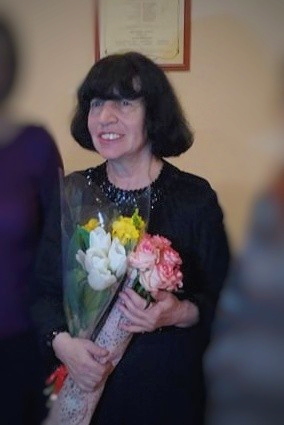
Svetlana Navasardyan, is an Armenian classical concert pianist.
Malazgirt or Malâzgird, historically known as Manzikert, is a town in Muş Province in Turkey. It is the seat of Malazgirt District. Its population is 18,873 (2022). It is mostly populated by Kurds with few Hidden Armenians.

Movses Khorenatsi was a prominent Armenian historian from late antiquity and the author of the History of the Armenians.

Arakelots Monastery was an Armenian monastery in the historic province of Taron, 11 km south-east of Mush (Muş), in present-day eastern Turkey. According to tradition, Gregory the Illuminator founded the monastery to house relics of several apostles. The monastery was, however, most likely built in the 11th century. During the 12th-13th centuries it was a major center of learning. In the following centuries it was expanded, destroyed and renovated. It remained one of the prominent monasteries of Turkish (Western) Armenia until the Armenian genocide of 1915, when it was attacked and subsequently abandoned. It remained standing until the 1960s when it was reportedly blown up. Today, ruins of the monastery are still visible.

Foreign relations exist between Armenia and China. The first references to Armenian-Chinese contact are found in the works of 5th-century historian Moses of Chorene and 6th-century geographer and mathematician Anania Shirakatsi. The People's Republic of China officially recognized Armenia on December 27, 1991. Diplomatic relations between Armenia and the People's Republic of China were established on April 6, 1992. The Embassy of China to Armenia was established in July 1992, while the Embassy of Armenia to China started its activities on August 10, 1996. The Armenian Ambassador to China resides in the Beijing embassy.

Armavir was a large commercial city and the capital of ancient Armenia during the reign of the Orontid dynasty. It is located 1 km west of the 17th-century village of Armavir.

Hasmik S. Poghosyan, Armenian state and political figure, Minister of Culture of RA (2006-2016).
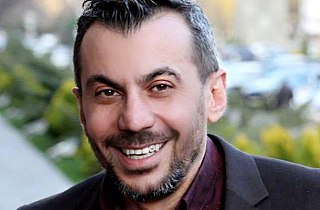
Arman Nur is an Armenian designer, jeweler, sculptor, and painter. In 2012, Nur was awarded the Armenian Ministry of Culture's Gold Medal, and in 2013, he got the President of Armenia's Movses Khorenatsi medal.

Verjine Svazlian is an Armenian ethnographer and folklorist, historian, genocide scholar, Leading Researcher at the Institute of Archeology and Ethnography of NAS RA, Doctor of Philology, Professor. Honoured Scientists of the Armenia (2016). Svazlian saved from a total loss the various folklore relics communicated, in different dialects, by the Armenians forcibly exiled from Western Armenia, Cilicia and Anatolia to the various countries of the world and finally repatriated to Armenia.
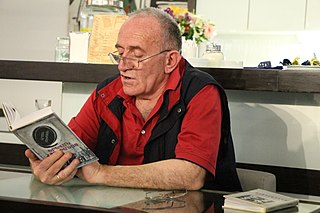
Armen Shekoyan was an Armenian writer, poet and journalist.
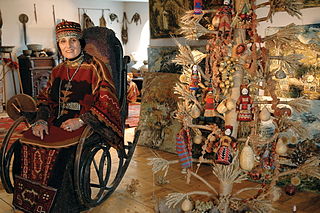
Lusik Aguletsi ; born Lusik Zhorzhiki Harutyunyan; was a Nakhichevan-born Armenian painter, ethnographer, and Honored Cultural Worker of Armenia.
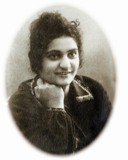
Tamar Hovhannesi Tumanyan was a Soviet Armenian architect. She was awarded the title, Honored Worker of Culture of the Armenian SSR (1977). Her father was poet and writer Hovhannes Tumanyan.



















